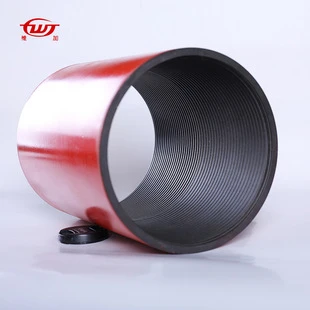- Afrikaans
- Albanian
- Amharic
- Arabic
- Armenian
- Azerbaijani
- Basque
- Belarusian
- Bengali
- Bosnian
- Bulgarian
- Catalan
- Cebuano
- Corsican
- Croatian
- Czech
- Danish
- Dutch
- English
- Esperanto
- Estonian
- Finnish
- French
- Frisian
- Galician
- Georgian
- German
- Greek
- Gujarati
- Haitian Creole
- hausa
- hawaiian
- Hebrew
- Hindi
- Miao
- Hungarian
- Icelandic
- igbo
- Indonesian
- irish
- Italian
- Japanese
- Javanese
- Kannada
- kazakh
- Khmer
- Rwandese
- Korean
- Kurdish
- Kyrgyz
- Lao
- Latin
- Latvian
- Lithuanian
- Luxembourgish
- Macedonian
- Malgashi
- Malay
- Malayalam
- Maltese
- Maori
- Marathi
- Mongolian
- Myanmar
- Nepali
- Norwegian
- Norwegian
- Occitan
- Pashto
- Persian
- Polish
- Portuguese
- Punjabi
- Romanian
- Russian
- Samoan
- Scottish Gaelic
- Serbian
- Sesotho
- Shona
- Sindhi
- Sinhala
- Slovak
- Slovenian
- Somali
- Spanish
- Sundanese
- Swahili
- Swedish
- Tagalog
- Tajik
- Tamil
- Tatar
- Telugu
- Thai
- Turkish
- Turkmen
- Ukrainian
- Urdu
- Uighur
- Uzbek
- Vietnamese
- Welsh
- Bantu
- Yiddish
- Yoruba
- Zulu
casing collar
The Importance of Casing Collars in Oil and Gas Drilling Operations
In the oil and gas industry, the drilling process is a complex and challenging endeavor, requiring precision and advanced technology. One of the critical components of this operation is the casing collar, which plays a vital role in ensuring the integrity and safety of the well. Casing collars are essential fittings used in the casing string, serving multiple functions that contribute significantly to the overall success of drilling operations.
A casing collar is a specific type of pipe fitting that is placed at intervals along the casing string, which is the steel pipe used to line the wellbore. These collars are typically thicker and stronger than the regular casing pipe, providing added structural support. They are designed to withstand the extreme conditions present in underground formations, including high pressures, temperatures, and abrasive materials. By reinforcing the casing string, collars help prevent collapse and maintain the well’s structural integrity, which is crucial for safe drilling and production.
One of the primary functions of casing collars is to facilitate the proper placement of cement
. After the casing is installed in the wellbore, cement is pumped down the casing and up the annular space between the casing and the borehole wall. Casing collars create specific locations where cement can be held during the curing process, ensuring a solid bond between the casing and the surrounding geological formations. This cementing process is critical for isolating different layers of rock, preventing fluid migration, and protecting the well from potential hazards such as blowouts.casing collar

Casing collars also play a significant role in the operation of various well intervention and completion tools. These collars provide a point of attachment for additional equipment and sensors, enabling operators to perform essential functions such as pressure testing, logging, and even hydraulic fracturing. The specific design of the collars allows for the installation of various downhole tools, enhancing the operational flexibility of the well and optimizing production rates.
Moreover, casing collars facilitate the identification of casing sections during drilling operations. Each collar can be marked with unique identifiers, which help drilling crews keep track of the casing string's depth and position. This information is critical for monitoring the well's status, planning maintenance activities, and ensuring compliance with safety regulations.
The selection of casing collar materials is crucial for their performance and longevity. They are typically made from high-strength materials such as carbon steel or alloy steel, which can resist corrosion and wear over time. Additionally, advancements in coating technologies have led to the development of protective coatings that enhance the collars' durability, particularly in harsh environments where exposure to corrosive fluids is a concern.
In conclusion, casing collars are indispensable components in the oil and gas drilling process. Their ability to enhance the structural integrity of the well, facilitate cementing operations, and support various downhole tools underscores their importance in ensuring safety and efficiency in drilling operations. As the industry continues to evolve and face new challenges, the role of casing collars will only become more significant, highlighting the need for ongoing innovation and development in this critical area of drilling technology. Investing in high-quality casing collars can ultimately lead to safer, more efficient operations and a reduced risk of costly failures in the field.
-
Well Casing Extension Couplings – Applications and InstallationNewsJun.06,2025
-
Types of Crossover Subs in Drilling & CompletionNewsJun.06,2025
-
Key Features of High-Quality Tubing Pup JointsNewsJun.06,2025
-
Installation and Maintenance Tips for Steel Couplings for PipeNewsJun.06,2025
-
How to Select the Right Pup Joint for Oil & Gas OperationsNewsJun.06,2025
-
Applications of Stainless Steel Pipe CouplingsNewsJun.06,2025







